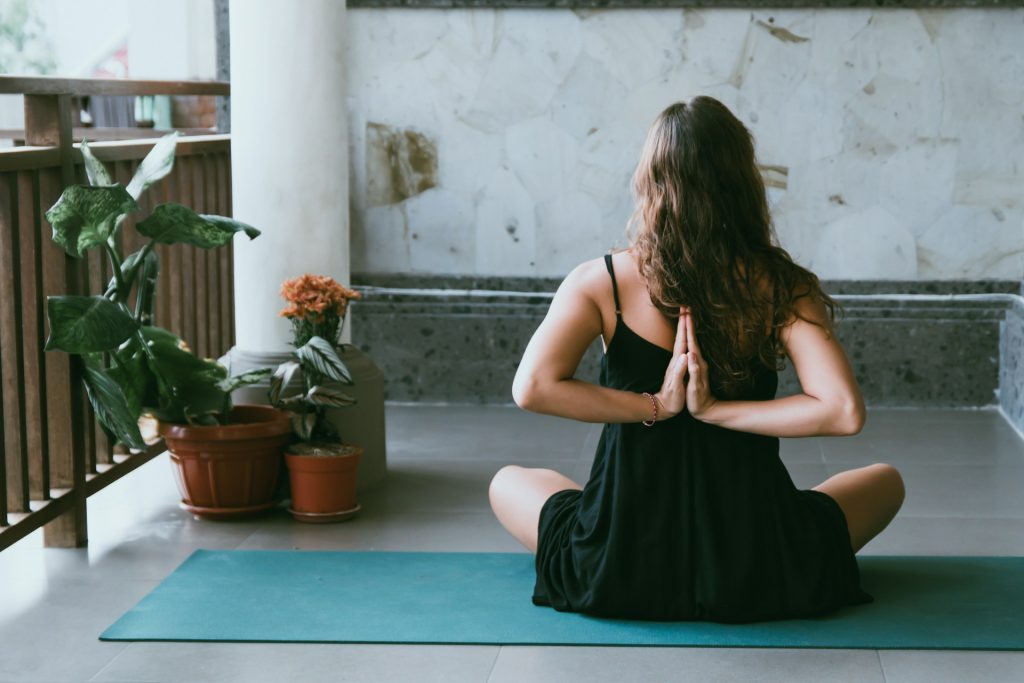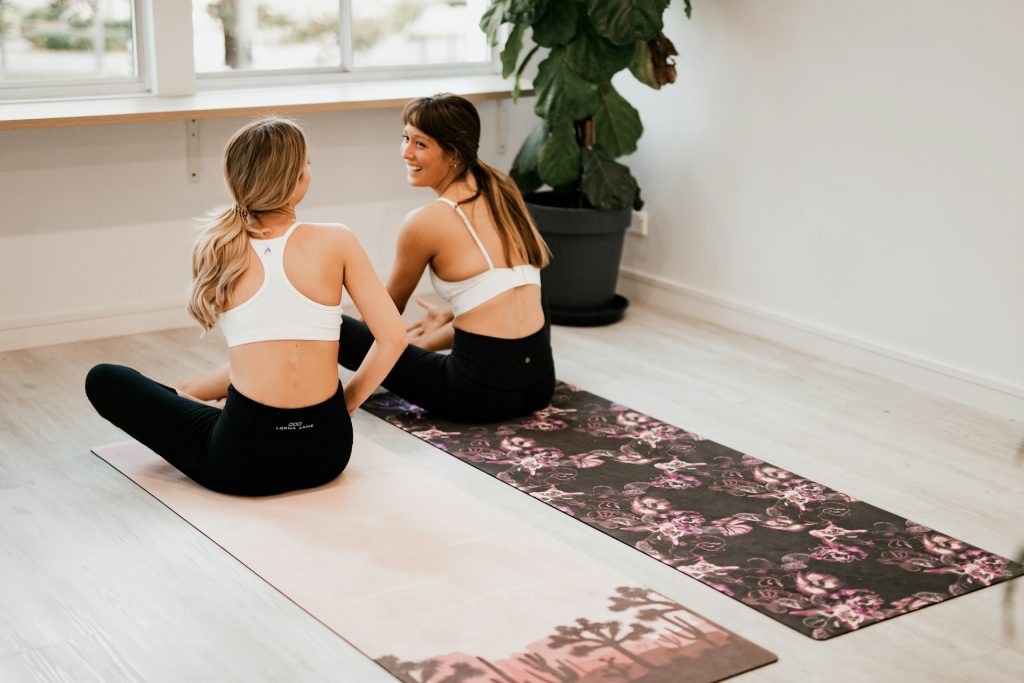At its core, yoga is a multifaceted discipline encompassing various styles, such as Vinyasa and Yin, each with its specific rhythm and intensity. Central to all forms is the integration of breathing techniques and yoga poses, designed to enhance both physical and mental well-being. It’s a practice that transcends mere physical exercise, inviting a deeper spiritual exploration.
Yoga’s holistic approach transcends physical flexibility, incorporating breathing techniques that unite the body and mind. This practice encourages practitioners to explore their inner landscape, fostering a sense of balance and peace that permeates all aspects of life. As one cultivates a regular yoga practice, they may discover that the journey towards flexibility is also a path to emotional and spiritual liberation.
Demystifying Stretching and Its Direct Benefits
Stretching is a straightforward practice with direct benefits, such as improved flexibility, better circulation, and reduced injury risk. It is a vital element in maintaining overall body mobility, especially when incorporated into an active lifestyle. Through stretching, one can specifically target areas of tension, aiding in recovery and enhancing performance in other physical activities.
How Stretching Complements an Active Lifestyle
Stretching is a dynamic complement to an active lifestyle, involving holding positions to lengthen muscles and relieve tension. It pushes the body to enhance range of motion without discomfort. While typically less intense than power yoga, stretching can still elevate the heart rate and contribute to overall fitness when combined with exercises designed to engage the entire body.
The Core Differences Between Yoga and Stretching
Mental and Spiritual Engagement in Yoga
Yoga is an ancient practice that nurtures greater awareness through a blend of physical exercise and mental focus. Unlike stretching, which emphasizes physical benefits, yoga encourages a holistic engagement, integrating mindfulness and breathing instructions to create a meditative state. This union of body and spirit cultivates a deep connection with the self, fostering mental health and emotional balance.
Technical Aspects and Poses Unique to Each Practice
While stretching involves holding positions to maximize muscle length, yoga encompasses a wider array of technical aspects and poses. Some yoga workouts, like power yoga, are vigorous and can significantly increase the heart rate. Others involve a fluid transition between poses, emphasizing the synchronization of movement and breath. This diversity in practice offers a spectrum of options to push your body and mind in unique and fulfilling ways.
The Role of Breathing Techniques
Breathing techniques are pivotal in yoga, with deep, prolonged breaths enhancing the practice’s meditative quality. In contrast, stretching utilizes breathing to improve exercise performance and to ensure practitioners are not holding their breath, which can lead to tension rather than relaxation. Proper breathing is thus a cornerstone for both practices, albeit with differing applications and outcomes.
Equipment and Space Requirements
Yoga requires various equipment and space considerations to fully participate in a yoga program, from yoga mats to blocks and straps. These facilitate the performance of yoga poses, which can range from beginner to advanced levels and demand a certain degree of strength and openness. Stretching, however, is more accessible, as it requires no special equipment and can be practiced by individuals of all fitness levels, making it a versatile addition to any wellness routine.

Evaluating Yoga and Stretching Based on Personal Aims
Aligning Your Wellness Goals With the Right Practice
In aligning wellness goals with the right practice, it is vital to consider the differing aims of stretching and yoga. While a yoga routine often encompasses flexibility, strength, and balance, stretching focuses on targeting specific areas for recovery and performance enhancement. The right choice will depend on individual objectives and the desired balance between physical and mental well-being.
Setting Intentions and Measurable Objectives
Setting clear intentions and measurable objectives is the foundation for progress in any wellness practice. By defining what one hopes to achieve through yoga or stretching, it becomes possible to tailor the practice to individual needs and monitor growth over time. These goals can range from enhanced flexibility to improved mental focus, each with their own set of benchmarks for success.
Time Commitment and Lifestyle Considerations
Yoga classes can be viewed as both a physical and philosophical undertaking, demanding a time commitment that reflects its comprehensive nature. Whereas stretching may be integrated into a daily routine with ease, yoga often requires a dedicated slot in one’s schedule. Increased flexibility and the profound impact on mental and emotional states are among the rewards for those who invest the necessary time into their yoga practice.
Financial Factors and Accessibility
When weighing yoga against stretching, financial considerations play a pivotal role in accessibility. Yoga often requires a financial investment for classes, yoga instructors, and potentially, equipment like mats and blocks. Conversely, stretching can be done at no cost, necessitating minimal space and no special gear. While yoga studios offer structured environments, stretching affords the flexibility to practice anywhere, aligning with varying budgetary constraints and personal preferences.
Advantages of Integrating Yoga or Stretching into Your Routine
Mental Clarity and Stress Reduction through Yoga
Yoga stands out for its profound impact on mental clarity and stress reduction. Beyond the physicality of yoga postures, the practice incorporates breathing and meditation techniques that calm the mind, decrease anxiety, and enhance focus. This holistic approach goes beyond muscle flexibility, offering a sanctuary for mental health and serving as a potent antidote to the stresses of daily life.
The Physical Benefits of Stretching for Everyday Movement
Stretching is integral to maintaining the body’s functional movement and flexibility. Regularly stretching your muscles leads to improved posture, reduced risk of injuries, and a decrease in muscle soreness post-exercise. The benefits of stretching extend to everyday life, enabling a more active and enjoyable existence, free from the constraints that tight muscles impose.
Crafting a Balanced Approach for Optimal Health
To achieve optimal health, crafting a balanced approach that includes both yoga and stretching is beneficial. Yoga enriches the practice with spiritual and mental dimensions, while stretching focuses on enhancing physical flexibility. Together, they provide a comprehensive regimen that nurtures the body and mind, paving the way for a holistic state of wellness.
Making an Informed Choice: Yoga or Stretching?
Assessing Fitness Levels and Abilities
When choosing between yoga workouts and a stretching program, it’s crucial to assess your fitness levels and abilities. Yoga can range from gentle to intense, with some styles requiring significant strength and openness. Stretching, while beneficial for your body, can be less demanding and more readily adapted to various skill levels. Reflect on your training that focuses on breathing, balance, and flexibility to determine if you should opt for yoga or a more targeted stretching routine.
Identifying Your Primary Reasons for Practice
Identifying your primary reasons for practicing stretching and yoga is key to aligning with your wellness journey. Stretching may cater to recovery from injuries or specific athletic goals, while yoga often encompasses a broader spectrum, including strength, balance, and mental focus. Clarify your objectives to choose the practice that best supports your path to health and fulfillment.
Considering Long-Term Commitments and Consistency
Committing to a practice requires consideration of long-term sustainability and consistency. Whether it’s the diverse styles of yoga or a stretching regimen, selecting a practice that fits into your lifestyle and resonates with your interests is crucial for maintaining regular participation and reaping lasting benefits.

Practical Insights and Tips
Essential Yoga Poses for Beginners
For those new to practicing yoga, mastering a few essential yoga postures can provide a solid foundation. Beginners are encouraged to focus on traditional yoga staples such as the downward-facing dog, warrior sequences, and simple balancing postures. These poses, combined with breathing exercises and deep diaphragmatic breaths, initiate a journey into yoga’s physical and spiritual realms.
Stretching Techniques for Improved Flexibility
Integrating stretching into your fitness routine is pivotal for developing flexibility. Techniques such as dynamic stretches to warm up and static stretches for cooling down are fundamental. Regularly practicing these can help stretch your muscles, improve range of motion, and contribute to a well-rounded exercise regimen.
Incorporating Breathing Exercises Into Your Regimen
Alongside performing stretches, incorporating breathing exercises into your regimen can enhance the effectiveness of your practice. Focusing on rhythmic breaths during stretching can deepen relaxation, increase oxygenation, and promote a sense of calm, augmenting the physical benefits with mental tranquility.
Conclusion: Embracing the Journey Towards Holistic Well-Being
As individuals journey through their wellness practices, embracing mindfulness and physical awareness is a transformative step. It requires a conscious effort to remain present during each movement, acknowledging the body’s capabilities and sensations. This approach not only enhances the benefits of yoga and stretching but also fosters a deeper connection to the self. Cultivating this awareness can lead to improved posture, reduced injury risk, and a more profound sense of bodily autonomy, guiding practitioners toward a harmonious balance between their physical and mental states.
